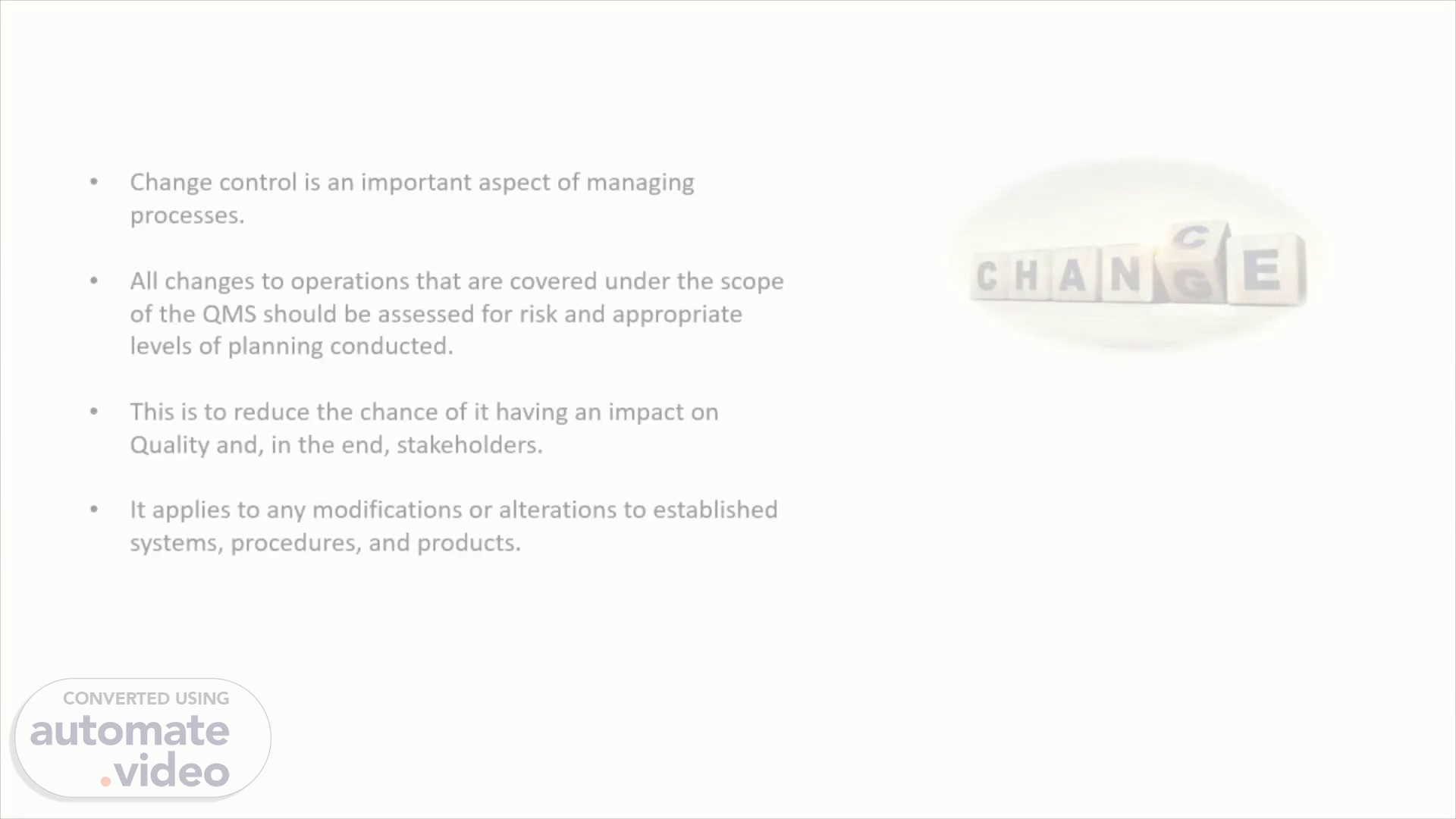
Page 1 (0s)
[Audio] Let's we talk about the Change control Procedure In this section I will give brief description about the change control and how it works. You will get more information about the change control in advanced in a another module designed by the BRA QA department. Change control is an important aspect of managing processes. All changes to operations that are covered under the scope of the QMS should be assessed for risk and appropriate levels of planning conducted. This is to reduce the chance of it having an impact on Quality and, in the end, stakeholders. It applies to any modifications or alterations to established systems, procedures, and products. Change control can be applied when changing the; Production processes Raw materials and suppliers Production sites and equipment Test methods Distribution channels and country of sale Regulatory and safety requirements.
Page 2 (1m 8s)
[Audio] Change control process is bit more advanced and use primarily in the management level compared to other QMS processes. You can see the basic change control steps in this diagram..
Page 3 (1m 21s)
[Audio] Lets see few examples of the change controls which available in PyNet under change controls. Add new fungicide for Tasmanian Pyrethrum crops Change the existing raw material supplier management process by including quality agreement Change raw material procedure to approval of materials by the receival staff Change to critical refinery operating parameters - Separator Inlet Temperatures TE126, TE326 Change BRA Training procedure.
Page 4 (1m 58s)
[Audio] Recording Change Control Recording the change control is a vital process in the QMS, and BRA Staff could able to raise complaints through PyNet. Let's see how we can raise the complaints in PyNet. Click on the Initiate Quality Process Quick Link Select Initiate change control' and complete the required information. Make sure you include the details of the complaint and attach any relevant correspondence. Quality will raise actions based on the investigation outcomes. In this video you can see how to raise a change control through PyNet..
Page 5 (2m 39s)
Let’s take once scenario to explain application of the key QMS processes.
Page 6 (3m 28s)
. Documentation and records used in manufacturing and supporting processes should meet a certain standard to ensure product quality and safety. Handwritten records should be: Attributable: It must be clear who recorded the data. Legible: All entries must be legible, including corrections. Contemporaneous: Data must be recorded as soon as practicable. Original: Data should be recorded directly onto the original form. Accurate: The recorded data must be a true reflection of the actual reading or observation..
Page 7 (4m 0s)
Correcting Errors in documents. Understandably, errors will be made when recording data. When this happens, correct the error by: Making a single line through the error – the underlying incorrect data must remain legible if possible. Initialling and dating the correction for traceability..
Page 8 (4m 15s)
Blank fields in documents. Where there is no data to be entered into a single field on a form, write 'N/A' When the data does not fill all the available lines or spaces in a field, rule out the ‘extra’ spaces with a single diagonal line to prevent the addition of data at another time. Label the line “N/A” and initial and date. Do not use ditto marks ("). Always fill data in completely..
Page 9 (4m 35s)
Do not;. A red circle with a black background Description automatically generated.
Page 10 (4m 54s)
. Document Archive process. Document archiving involves the long-term storage of inactive documents. You should archive documents that you need to retain for legal, regulatory, or auditing purposes. Physical documents use in BRA placed for more than 2 (two) years old that are no longer refer could move into an Archive Box. SOP-0029 documents the archiving process at BRA including details of retention period requirements.